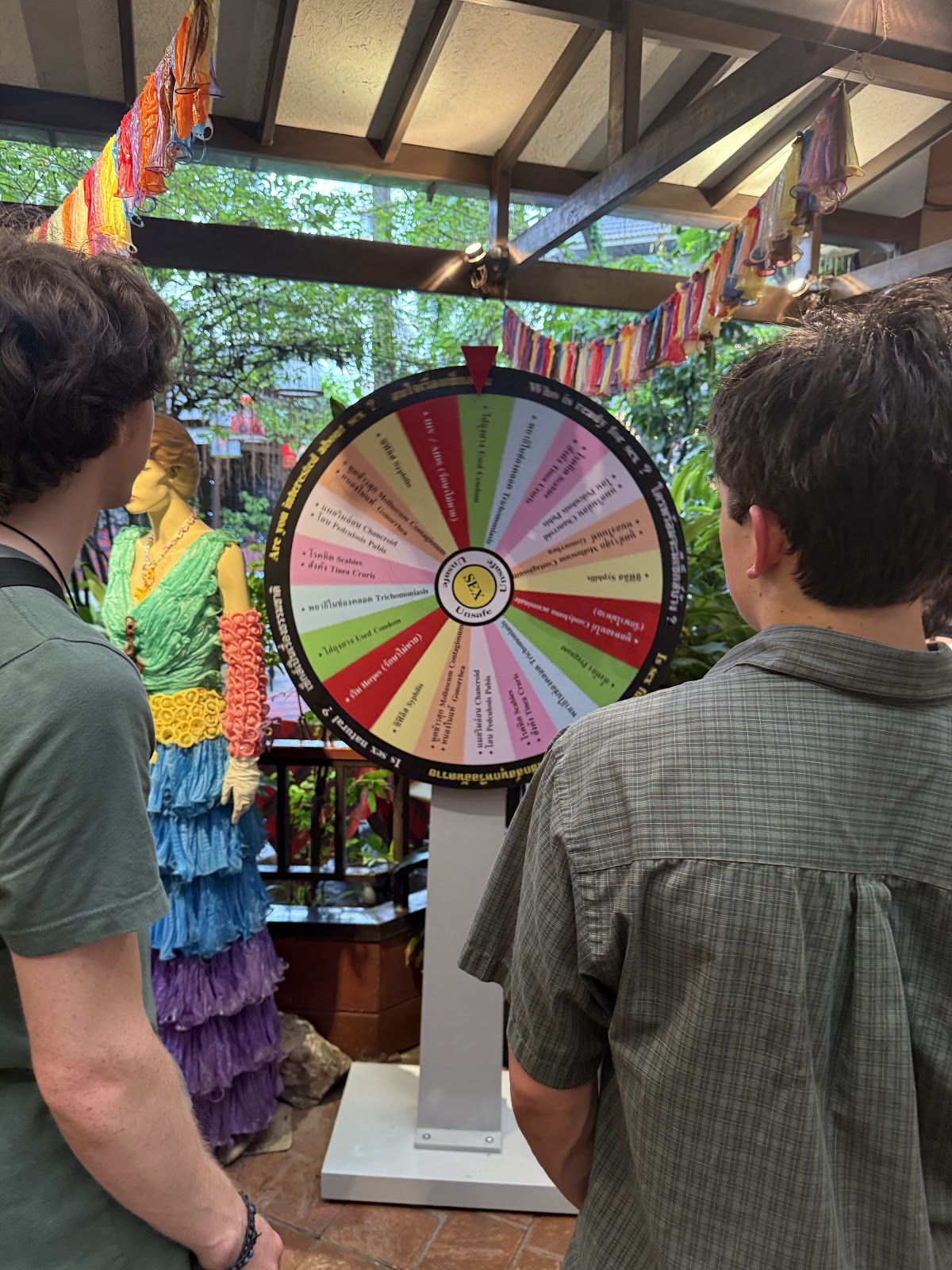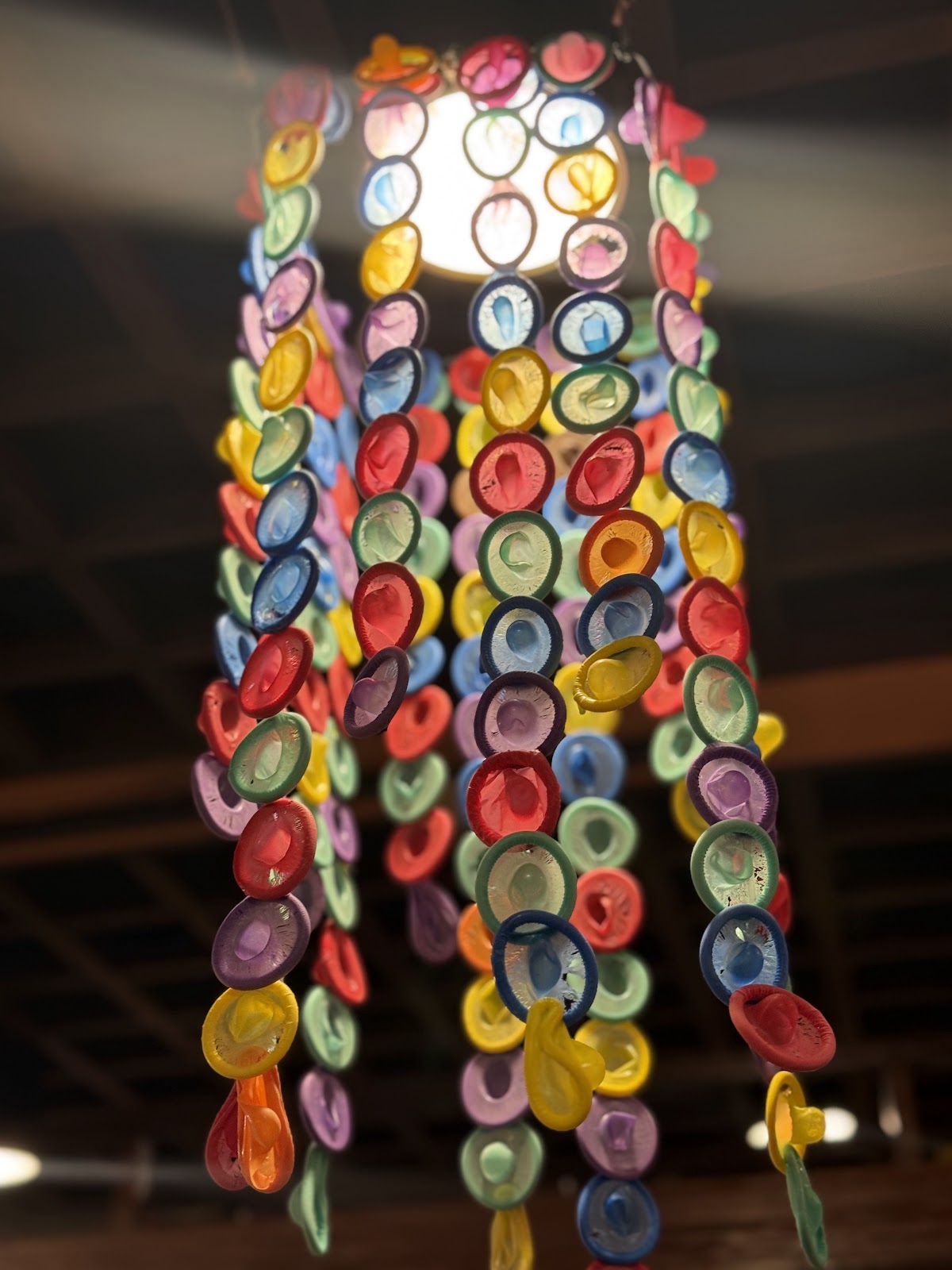Image of Eminem meme "Guess who's back...back again"
Welcome back to my very-unofficial-not-affiliated-with-the-institution-whatsoever travel blog!
For the first time readers, I've been keeping this blog to document unique travel experiences since 2008, and over the last decade, it's primarily been a place to give the day-to-day updates of study-away programs I've led through Florida State University, the University of Georgia, and most recently, Westminster University. I'm coming at you live from Bangkok, Thailand, where I will be traveling and learning with 22 Westminster students, my colleague Dr. Han Kim, and our local Thai host (and hero), Noi and her team.
For the first time readers, I've been keeping this blog to document unique travel experiences since 2008, and over the last decade, it's primarily been a place to give the day-to-day updates of study-away programs I've led through Florida State University, the University of Georgia, and most recently, Westminster University. I'm coming at you live from Bangkok, Thailand, where I will be traveling and learning with 22 Westminster students, my colleague Dr. Han Kim, and our local Thai host (and hero), Noi and her team.
This year's Thailand itinerary is a little different than the past two times I've co-led this trip, largely due to a later graduation date at Westminster, which, in turn required a later arrival date to Thailand. If you've read Thailand blog posts before, I'll occasionally link to previous posts if some of the contextual content is the same from previous years, but I'll always update with new pictures of the crew, new insights, etc. And students, if you share the blog with your family members, I will give them shoutouts. I still give Kamiya's grandmother a shoutout and that was from a trip in 2022! Hi Kamiya's grandma!
Also, Chris L., if you happen to read this, you also got a shoutout today during our trip orientation. We encouraged the students to focus energy into getting to spend dedicated 1:1 time with every other student at some point on this trip--inspired by you. Thanks for being a positive influence on me and the Westminster community--your legacy continues!
5/18 and 5/19 -- travel from various US domestic cities to Bangkok. Largely uneventful--a few delayed flights that required some rebookings, one piece of lost luggage that was found and reunited with its owner, and one student had to spend the night in Singapore due to a missed connection, but everyone arrived in time this morning to enjoy the fabulous hotel buffet. Most of us had been up for about 36 hours (with maybe some in-flight cat naps if you're lucky enough to be able to sleep on a plane) that included a 2 hour flight (SLC --> SEA), a 12-hour flight (SEA --> ICN) and a 5 hour flight (ICN --> BKK). As you might imagine, it's...a long day. Highlights: I crocheted a peacock and managed to get extra EXTRA security in ICN because of my yarn cutter; I watched Beetlejuice Beetlejuice, Dune 2, and Inside Out 2 (so many sequels!) on the ICN flight, and Han and I worked on a research paper whose first draft deadline was 3 days ago (see, students, we do it too!)...oops!
5/20 -- first full day in Bangkok
First full day in Bankgok is a great time to acclimate to the time change, humidity, and take care of the outstanding to-do's like getting cash out of ATMs, getting SIM cards set up in phones, getting oriented to Thai traditions and culture.
One of my favorite things to do while in Thailand is going running with students. Despite a 2AM bedtime, a stalwart group of students joined me for a 7:15AM light "yog" in Benchakitti Park (after an accidental detour that added a mile--that was on me--sorry team!).
First run of the trip
After the yog, we enjoyed the hotel's breakfast and had our first "Welcome to Thailand" group meeting, where we went over the PFT (plan for today) and what to expect over the next several days. After that, Han and I invited students to join us for a short walkabout in the area surrounding our hotel. There are two very nice, very large malls within about a half mile of the hotel, and while US malls are probably among the "Top 10 Places I'm Least Interested in Visiting," Thai malls have excellent food courts and are a great place to people watch and passively (or actively) absorb Thai culture. Also, this blog features a lot of food photos. As a student once told me, "the phone eats first."
Mango and sticky rice

Papaya salad with fermented fish and crab. We'll eat papaya salad a lot on this trip.
And it's one of the spiciest things we'll eat!
After lunch, we had a few hours of free time--most of us are starting to feel the effects of jet lag, so many folks went back to take a nap in the hotel, but after sitting on planes for 19+ hours yesterday and finishing my first semester as Dean of Students, I decided it was time to:
So I did some quick research to find a close, reputable parlor where I could treat myself to a traditional Thai massage. And before anyone goes spouting off about the optics of getting massages on a study abroad, let's do some learning :)
From the Thailand Foundation:
From the Thailand Foundation:
Thai massage remains highly in-demand today, with more and more approved massage therapy schools having opened across the country during the reign of Rama IX (1946–2016). Seeing the popularity of Thai massage, Rama IX encouraged Wat Pho’s Chetawan Massage School, which by then had come into existence, to continue offering their four popular courses, while constantly improving on their standards to meet local and global demands and expanding their reach. The Chetawan Massage School now has four branches in Thailand: in Wat Pho, Chaeng Wattana, Salaya, and Chiang Mai.
Given the history of Thai massage, it may be unsurprising, perhaps, that there are now two styles of Thai massage: the royal style and the commoner’s style. The royal style was traditionally used to massage aristocrats and royalty. This type of massage is gentler and more elegant, using only hands, unlike the commoner’s style, which also employs the feet, knees, and elbows. The royal style also requires the recipient of the massage to either sit up or to lay on their backs or side, but never uncomfortably on their stomach. The commoner’s style, which is more likely what one gets requesting a Thai massage, can be less gentle, and, as aforementioned, in this style, the massage therapist may also use parts of his or her body viewed as a little less refined: feet, knees, and elbows. This is the style of massage featured at Wat Pho.
It's worth doing, both for the physical and mental benefits as well as experiencing a unique and important facet of Thai history and culture.
Also, the protocol is different than a typical US massage parlor, so I told students I'd give some pointers on the blog:
- When you arrive, you'll request what type of service you'd like (e.g. a 1-hour traditional Thai massage, a 30 minute head/shoulders massage, a 1-hour foot massage, etc.).
- You will likely pay for the service up front.
- For traditional Thai massages, one of the first things they may do is wash your feet, so they'll ask you to take off your shoes (and they may provide you a pair of sandals) and they'll take you to a wash basin where the therapist will wash your feet. Remember, "feet low, head high" is important in Thai culture and you can read more about it here from the Thailand Foundation.
- After your feet are washed, they'll take you to a room with a mat or mattress (often on the floor) and ask you to change into what effectively look like scrubs (large shirt and large pants). Thai massages--at least in my experience--are clothing on.
- After you're changed, the therapist will give you directions on how to position your body. After that, enjoy! These massages focus on pressure points and elongation, so it will feel like a combination of a massage, stretching, and maybe even a little physical therapy.
- The therapist will tell you when they are finished. You'll change back into your clothes--remember to tip the therapist after you're changed. Between 10-20% of the total cost.
- Depending on the parlor, you may be served some tea afterward :)
After the massage, it was time to meet the group to walk to Cabbages and Condoms for dinner and to meet Noi and Lek, our two Thai hosts (and honorary parents) who coordinate our in-country itinerary and are two of the most wonderful humans on the planet.
As always, C&C was great. Some background on C&C--specifically its founder, Mechai Viravaidya. This article was featured in The Dipomat (Hart, 2024):
Mechai Viravaidya has spent the last 50 years at the helm of family planning in Thailand, and has been credited with saving countless lives through his safe sex campaigns, which rose to the fore when the HIV/AIDS virus took hold in 1981. From his flagship restaurant Cabbages and Condoms in Bangkok, Mechai spoke with The Diplomat’s Luke Hunt about fulfilling his social obligations, inherited from his Thai father and Scottish mother, both medical doctors, who emphasized the importance of giving back. Born in 1941, he studied at the University of Melbourne and returned to Thailand where he became a government minister, traveled the country, and realized the potential devastating impact of a sharply rising birth rate and the difficulties faced by his nation’s mothers.
He was also confronted by political leaders who believed Thailand could become a global superpower if it had a large enough population and they were just not interested in reducing the country’s population rate. Mechai persisted and established the non-profit Population and Community Development Association which was largely funded through Cabbages and Condoms. The average number of children in Thai families fell from seven to 1.5. In Thailand, Mechai has affectionately been known as “Mr. Condom” and condoms are often referred to as “mechais” – nicknames he wears with a sense of humor while noting condoms are no more offensive than an orange or a tennis ball. These days Mechai is focused on his rural Bamboo Schools program and on elderly Thais, who lack family support, through his country’s extensive network of 40,000 temples where housing has been built on vacant land, health care is provided and food grown and distributed.
Our 2025 Thailand student group outside of Cabbages and Condoms














No comments:
Post a Comment